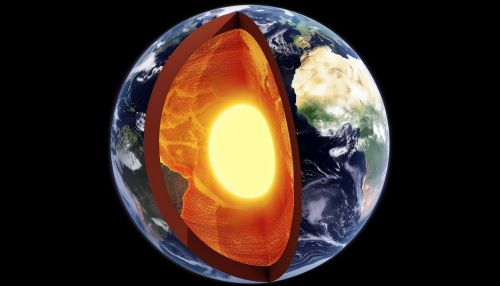D'' layer
Introduction
The "D layer" is a thin, discontinuous layer of the Earth's mantle, located directly above the outer core and below the lower mantle. This layer, also known as the D double prime layer, is of significant interest to geophysicists due to its unique properties and its role in Earth's geodynamics. This article delves into the complex characteristics of the D layer, its discovery, and its importance in the study of Earth's internal structure.
Discovery and Naming
The D layer was first identified in the 20th century through the analysis of seismic waves. These waves, generated by earthquakes, travel through the Earth and are recorded by seismographs. By studying the speed and direction of these waves, scientists can infer the properties of the Earth's interior. The D layer was named for its position: it is the "double prime" layer, located just below the mantle and above the core.
Physical Characteristics
The D layer is approximately 200 to 300 kilometers thick, though its thickness varies around the globe. It is characterized by its unique seismic properties, which differ from those of the overlying mantle and underlying core. The layer is believed to consist of a variety of minerals, including post-perovskite, a high-pressure phase of the mineral perovskite. The presence of this mineral, along with others such as ferropericlase, contributes to the layer's distinct seismic characteristics.


Role in Earth's Geodynamics
The D layer plays a crucial role in Earth's geodynamics, particularly in the processes of mantle convection and plate tectonics. It is believed to be the location where subducted tectonic plates sink into the mantle, a process known as subduction. This layer is also thought to be the source of plumes that rise through the mantle to form hotspots at the Earth's surface. Furthermore, the D layer is involved in the generation of Earth's magnetic field, as it is located at the boundary between the mantle and the outer core, where the geodynamo operates.
Current Research and Controversies
Despite its importance, the D layer is not well understood, and there are many ongoing debates among geophysicists about its properties and role in Earth's geodynamics. Some of these debates revolve around the composition of the layer, the nature of seismic discontinuities within it, and the mechanisms by which it interacts with the overlying mantle and underlying core. Current research on the D layer involves the use of advanced seismic techniques, high-pressure mineral physics experiments, and numerical modeling.
